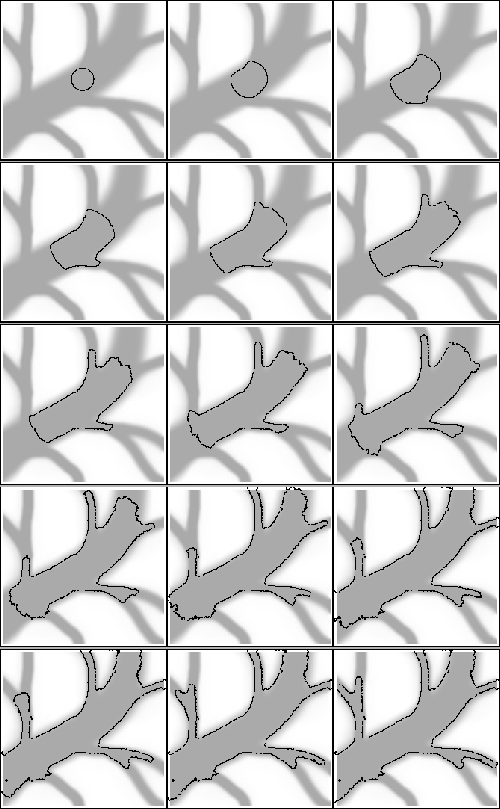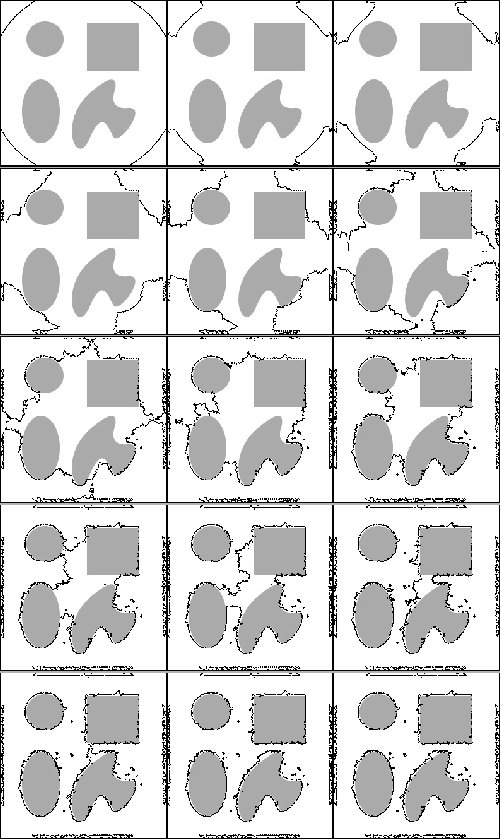


Next: Concluding Remarks
Up: Level Set Method for
Previous: Method
This section shows the results obtained on a variety of images. The curvature term was kept very low in all these
experiments, a high curvature did not give good results.
Figure 2:
Result of running the level set algorithm on a square image. The propagating boundary is represented by
the black contour. The first image is the initialization, and images after every 20 iterations are shown in
row major order. The sharp corners in the square are detected properly.
 |
Figure 3:
Result of running the level set algorithm on a medical image showing veins. The propagating front is
shown after every 20 iterations
 |
Figure 4:
Result of running the level set algorithm on the infamous duck. Propagating front
shown after every 20 iterations. Notice how the boundary splits to fit the two regions corresponding to eyes
 |
Figure 5:
Result of running the level set algorithm on an image with multiple objects. Propagating front
shown after every 20 iterations. The initialization here was outside all the objects and the boundary was
initially set to move inwards. The results on this image are not impressive. If the curvature term is increased
,a better result can be obtained but the time step would then have to be
set smaller and hence the number of iterations required for convergence would increased greatly.
 |



Next: Concluding Remarks
Up: Level Set Method for
Previous: Method
Saurabh Goyal
2003-12-16




